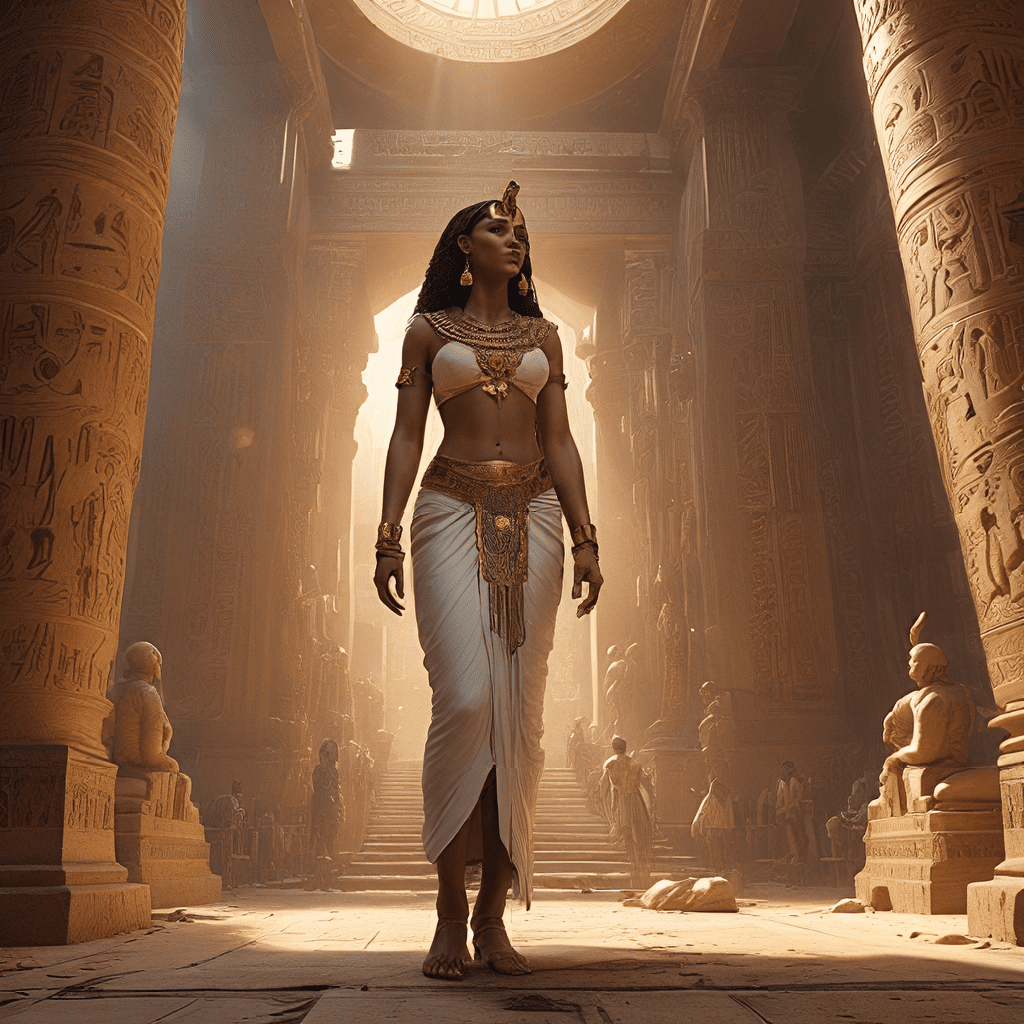The Egyptian Creation Myth: A Modern Retelling
The ancient Egyptians, known for their magnificent pyramids and intricate hieroglyphics, also possessed a captivating creation myth that has resonated through the ages. It’s a story that reflects their deep understanding of the natural world and their reverence for the divine. This retelling explores the essence of the Egyptian creation myth, presenting it in a way that is both accessible and insightful.
I. The Primordial Waters: A Sea of Nothingness
At the beginning of time, the universe was a formless void, a vast expanse of primordial waters known as Nun. This chaotic sea was a realm of absolute nothingness, a state of pure potentiality. The Egyptians believed that Nun was the source of all existence, the ultimate parent from which everything emerged. This concept of a primordial sea is found in various creation myths across the world, hinting at a deep human desire to understand the origins of the universe.
II. The Birth of Atum: A God Emerges from Chaos
From the depths of Nun, a single god emerged – Atum. He was a self-created being, a solitary deity who arose from the chaos. Atum is often depicted as a self-created god, a being who brought order and structure to the universe. This idea resonated with the Egyptians, who sought to find meaning in a world that could often feel chaotic and unpredictable.
III. From Darkness to Light: The Creation of the World
Atum, the first god, had a complex role in the creation process. He was not only the creator of the world but also its ruler. Through a process known as “ma’at,” he brought order out of chaos. The act of creation, in Egyptian mythology, is often described as a process of separation – the division of light from darkness, land from water, and sky from earth. This separation is believed to have been guided by Atum’s divine will, establishing the fundamental principles of the universe.
IV. The Divine Ennead: A Family of Gods Emerges
From Atum, the first god, a family of gods known as the Ennead emerged. The Ennead, a group of nine deities, included Atum’s children, grandchildren, and other significant figures who shaped the world. Each member possessed unique characteristics and powers, representing different aspects of nature and human life. The Ennead played a significant role in Egyptian mythology, embodying the interconnectedness of the world and illustrating the complex relationships between gods and humans.
V. The Sun God Ra: Ruler of the Heavens
Among the Ennead, the most prominent figure is Ra, the sun god. He is often depicted as a falcon-headed deity, representing the life-giving power of the sun. Ra created the world, bringing light and order to the cosmos. He was also responsible for the cycle of day and night, a symbol of the eternal rhythm of life and death. The Egyptians worshipped Ra as the ultimate ruler of the heavens and the source of all creation.
VI. The Land of the Two Lands: The Emergence of Egypt
The Egyptian creation myth not only explains the origin of the universe but also the birth of Egypt itself. According to the myth, the two lands of Upper and Lower Egypt were initially separate, later united by the gods. The Nile River, a vital source of life, is often depicted as a divine entity. The Egyptians believed that the Nile was a gift from the gods, providing them with sustenance, fertile land, and a connection between the two lands.
VII. The Role of the Nile: A Lifeblood of Civilization
The Nile River played a central role in the Egyptian creation myth and their civilization. The Egyptians viewed the Nile as a divine force, a source of life and fertility. The annual flooding of the Nile was seen as a divine blessing, bringing rich, fertile soil to the land and ensuring bountiful harvests. This cyclical event played a pivotal role in their beliefs about creation, regeneration, and the divine order. The Egyptians saw a deep connection between the Nile and their own existence.
VIII. The Mythological Significance: Order Arising from Chaos
The Egyptian creation myth highlights several important themes. First, it emphasizes the power of order over chaos. The creation of the world is seen as a triumph of ma’at, the divine order, over the initial formlessness of Nun. The myth celebrates the fundamental principles of balance, harmony, and justice that are essential for a flourishing society. It also emphasizes the importance of the cyclical nature of life, represented by the annual flooding of the Nile and the journey of the sun god Ra across the sky.
IX. The Creation Myth in Contemporary Culture
The Egyptian creation myth continues to resonate with people today. The themes of creation, order, and the cyclical nature of life are not only relevant to ancient Egyptians but also to people across cultures and time periods. The myth has inspired artists, writers, and thinkers for centuries, leaving its mark on everything from ancient works of art to contemporary movies and literature.
X. The Enduring Power of the Story: A Timeless Legacy
The Egyptian creation myth, with its rich symbolism and profound themes, remains a testament to the creativity and ingenuity of ancient Egyptian civilization. It offers a compelling narrative of the universe’s origins, exploring the relationship between humanity and the divine. More than just a story, the myth offers a framework for understanding the world and our place within it. It is a timeless legacy that continues to inspire and intrigue people from all walks of life.



